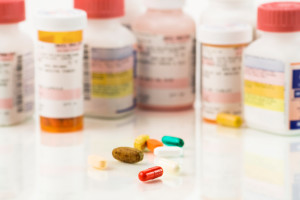 Today, providers are facing increasing regulations. Of course, there are legitimate reasons behind each of the rules set forth, but with the regulations come more processes. One process being discussed today is medication reconciliation—“a systematic process to decrease medication errors and associated patient harm”—now number 8 on the Joint Commission’s list of National Patient Safety Goals.
Today, providers are facing increasing regulations. Of course, there are legitimate reasons behind each of the rules set forth, but with the regulations come more processes. One process being discussed today is medication reconciliation—“a systematic process to decrease medication errors and associated patient harm”—now number 8 on the Joint Commission’s list of National Patient Safety Goals.
As healthcare providers and staff, our number one ethical focus is patient safety. One of the ways to keep patients safe is to make sure their medications are being reconciled thoroughly and in a timely manner. The provider, nurse, and pharmacist must work together to check for interactions and allergies to ensure the patient has no issues. When their kidneys are not filtering correctly, they have a greater chance of toxicity, which can lead to hospitalization or worse.
The complexity of the CKD and ESRD patient
CKD and ESRD patients are two of the largest population groups affected by “polypharmacy.” In fact, the average number of medications prescribed to these patients is about a dozen.1
Along with CKD or ESRD, a large percentage of patients may have co-morbidities, including diabetes mellitus (DM) and hypertension. Therefore, CKD and ESRD patients will typically have multiple providers: nephrologist, PCP, cardiologist, endocrinologist, and other specialists. With CKD and ESRD patients taking multiple medications prescribed by a variety of providers, it is imperative their medications are reconciled correctly.
According to the Medical Director Toolkit, there are many barriers that impede the DM patients’ medications being reconciled. A few barriers include:
- the provider who manages the DM may not be aware of medications that are contraindicated for ESRD patients
- the DM provider isn’t informing the practice or clinic of medication updates and vice versa
- the DM patient doesn’t understand the importance of managing their disease now that they have ESRD
- the DM patient is non-English speaking
- conflicting instructions are being provided by “dialysis and non-dialysis… (DM) providers”
What can be done to help this population of patients avoid problems associated with polypharmacy? What can be done if you, the provider, don’t feel the list is accurate? Are there any magic resolutions?
A reconciliation process
For CKD patients, some providers will have their staff call the patient a few days prior to the appointment to remind the patient to bring either an updated list of medications or the actual medications into the office. Sometimes this is done whenever the patient is called with an appointment reminder.
As a dialysis nurse, I participated in several processes designed to correctly reconcile medications for my ESRD patients.
The first thing I did was to ask each patient at the beginning of the month to bring in his or her “bag” of medications and vitamins, both prescribed and over-the-counter, so I could enter them into our practice’s e-prescribing tool. I’d make sure to put in the correct prescriber, medication name, dose, route, frequency, etc. Then, I’d give the bag of medications back to the patient to take home. This seemed to work pretty well. However, if an emergency or urgent situation arose, I wasn’t able to log onto my e-prescribing tool during the appointment to enter the medication list. In these instances, I’d write everything down and enter the list of medications after the shift. Definitely not an ideal situation, however, as long as they were entered in by the end of the day, I felt this process sufficed.
The problems occurred when the patient did not bring in their bag of medications. My clinic would send flyers home with the patients to remind them to bring in their medications. If a week or two went by, in addition to providing a friendly reminder in the clinic, we would call them at home to remind them and/or their caregiver to bring in the medications.
Providers and nursing staff are responsible for maintaining an updated and reconciled medication list. We know that patients tend to experience better outcomes when they actively participate in their own care. In addition to speaking to patients and educating them on the importance of their involvement, we should also promote their participation. A couple of ways to do this include: displaying posters that stress the importance of becoming familiar with one’s medications and, as noted in the 5-Diamond Patient Safety Program promoted by ESRD Networks, to “distribute word search to patients (and family) to prompt discussion on medication reconciliation.”
So, what should you do if you don’t feel that a patient’s medication list is up to date? First, let your nurse know. You’ll also want to ask the patient or have the nurse ask the patient’s caregiver. If you’re not seeing any results, let the manager of your dialysis clinic know there may be a discrepancy.
We’d appreciate hearing any suggestions you, as providers and staff, have for reconciling patient medication lists. For instance:
- How have you gotten your patients involved?
- How have you achieved success in your dialysis clinics?
- Are there other tools that practices could utilize in order to refocus everyone on this important task?
Please join the conversation by posting a comment!
 Susanne Thacker, BSN, RN, is a Clinical Consultant at Acumen Physician Solutions, traveling to practices across the U.S. to help with workflow and other processes. With over 10 years of both IT and nursing experience, she brings a breadth of knowledge in informatics and in-center hemodialysis.
Susanne Thacker, BSN, RN, is a Clinical Consultant at Acumen Physician Solutions, traveling to practices across the U.S. to help with workflow and other processes. With over 10 years of both IT and nursing experience, she brings a breadth of knowledge in informatics and in-center hemodialysis.
Reference
- St. Peter, W. L. (2010). Improving Medication Safety in Chronic Kidney Disease Patients on Dialysis Through Medication Reconcilation. Advances in Chronic Kidney Disease , 17 (5), 413-419.




Leave a Reply